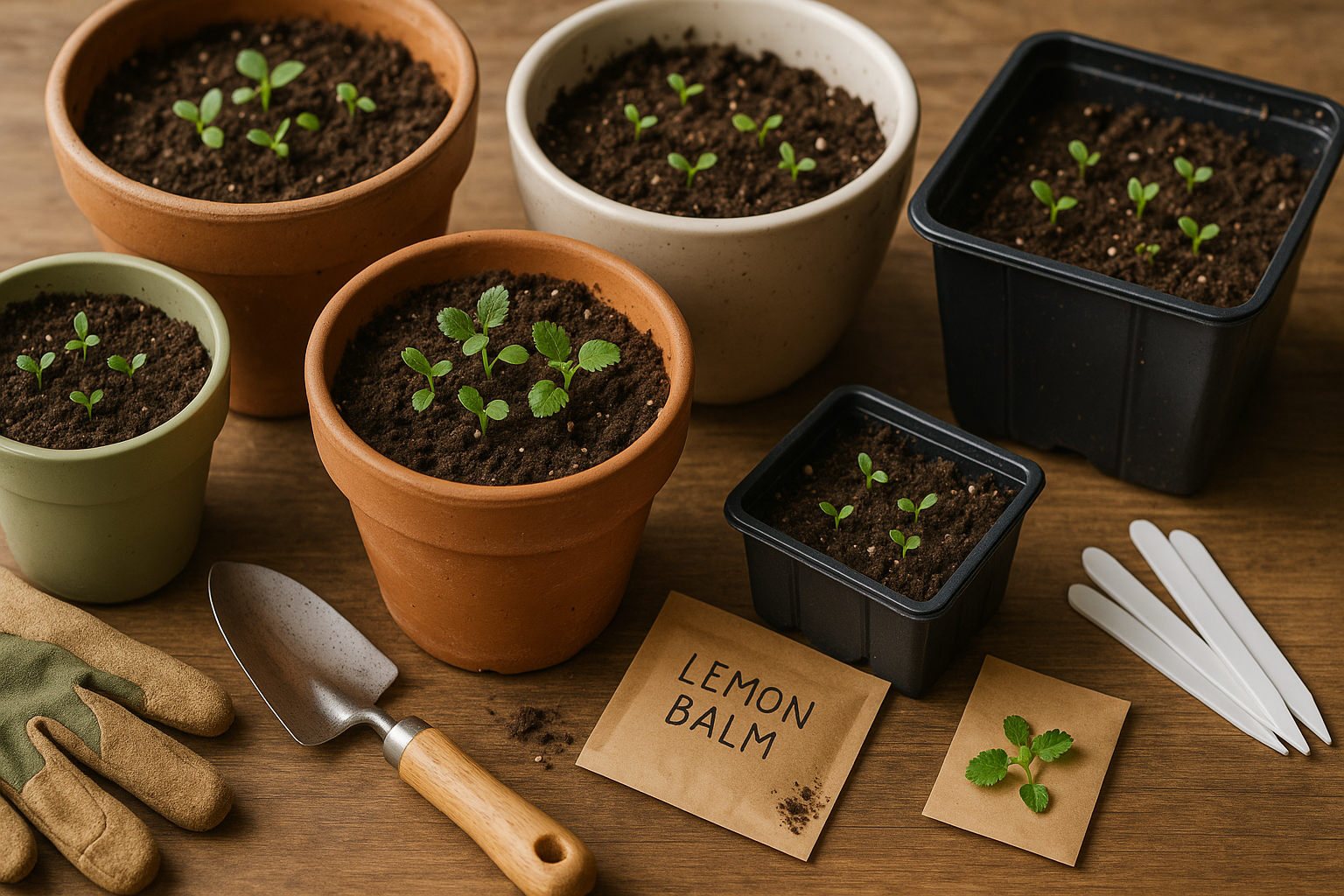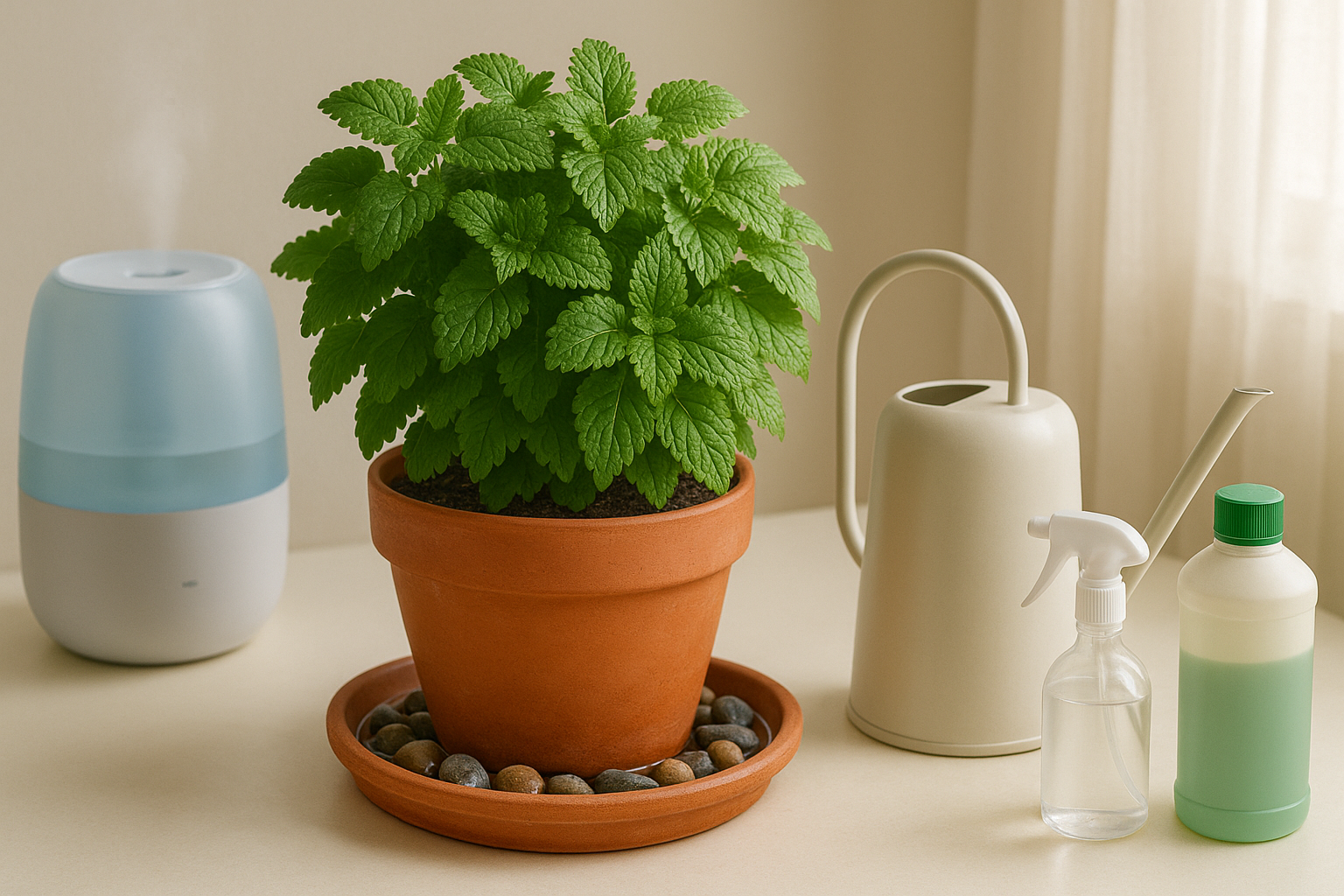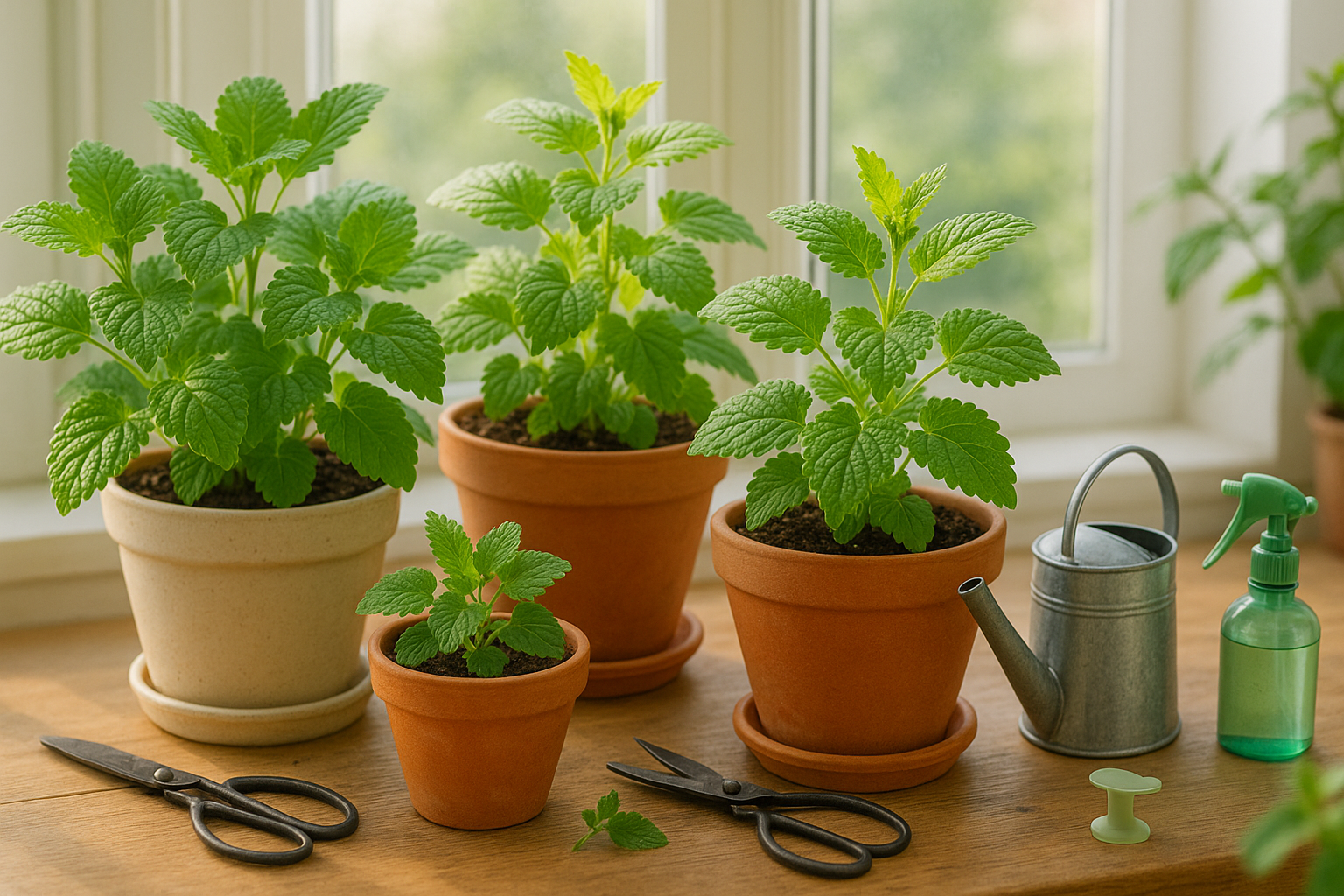Introduction to Growing Lemon Balm Indoors
Growing lemon balm indoors is a rewarding way to keep this fresh, fragrant herb close at hand all year round. Lemon balm isn’t just a cheerful addition to any windowsill—it brings a gentle lemon scent to your home, can boost your mood, and offers leaves perfect for tea, cooking, or soothing homemade remedies.
If you’ve ever wondered whether your kitchen, living room, or even office could become a mini herb garden, lemon balm is the ideal place to start. Not only is it beginner-friendly and low-maintenance, but it actually thrives in an indoor environment, especially when you can control its light and moisture more closely than outside.
With a few key tips—like choosing the right container, providing proper sunlight (or grow lights), and following some straightforward watering guidelines—you’ll find that growing lemon balm indoors is both easy and satisfying. In this post, we’ll cover everything from which pots to choose, how to create the best lighting situation (even if you don’t have a sunny window), caring fundamentals, and practical advice for keeping your lemon balm lush and healthy.
Ready to bring this versatile herb into your daily life? Let’s dive in!
Choosing the Right Variety and Container

When growing lemon balm indoors, selecting the right variety is key. Look for cultivars known for compact growth, such as ‘Compacta’ or ‘Lemonella,’ which are perfect for smaller spaces and container life. These dwarf varieties not only fit well on sunny windowsills but also require less frequent pruning.
When choosing a container, opt for pots that are at least 8 to 10 inches wide and equally deep to give the roots ample room to spread. Terra cotta or ceramic pots are popular because they allow soil to breathe, but plastic pots with drainage holes work well too. Just be sure any container you select has a hole at the bottom to prevent soggy roots, which lemon balm dislikes.
Fill your container with a high-quality, well-draining potting mix (not garden soil), as this provides the rich, loose foundation lemon balm needs for healthy growth. Mixes formulated specifically for herbs or vegetables are a great choice.
If starting from seed, sow them on the surface of moist soil and gently press them down; lemon balm seeds need light to germinate, so don’t cover them heavily. Germination can be slow, often taking up to two weeks, so patience is key. If you prefer immediate results, purchase healthy nursery plants and gently transplant them into your prepared container, taking care not to damage the roots.
Whether you grow from seed or young plants, keep the soil lightly moist but not waterlogged, and place your container in a bright spot with plenty of indirect sunlight. With regular care and attention to potting basics, you’ll be rewarded with lush, aromatic lemon balm year-round.
Light Requirements for Healthy Growth
Lemon balm thrives on plenty of sunlight and needs at least 5-6 hours of direct light daily for lush, healthy growth indoors. Placing your pot near a south-facing window is ideal since it offers the brightest and most consistent sunlight throughout the day. East- or west-facing windows work too, but you may need to rotate your plant regularly so all sides receive equal exposure, preventing uneven growth.
If your space lacks enough natural light—common in north-facing rooms or shaded apartments—supplement with artificial grow lights. Full-spectrum LED or fluorescent grow lights are excellent choices because they mimic natural sunlight and encourage robust foliage. Position the light 6 to 12 inches above the plant and keep it on for about 12-16 hours daily, ideally using a timer to ensure consistency while also allowing the plant a nighttime rest.
When lemon balm doesn’t get enough light, you’ll notice signs like long, weak stems (a “leggy” look), large gaps between leaves, overall paleness, or yellowing leaves. In contrast, a healthy lemon balm plant will be a rich, vibrant green with dense, bushy growth and leaves packed closely along sturdy stems.
Correcting light issues is often as simple as adjusting your plant’s spot, upgrading your window treatment, or extending grow light hours. Keep a watchful eye: if your plant continues to reach or stretch toward a window, it’s a sign it needs more light. Rotate the container weekly to maintain balance, and remember—providing ample, direct light is the most important step for enjoying vigorous, fragrant lemon balm indoors.
Essential Indoor Lemon Balm Care Tips

Caring for indoor lemon balm starts with mastering your watering routine. Lemon balm prefers consistently moist—but never soggy—soil. Water thoroughly when the top inch of soil feels dry to the touch; this usually means watering once or twice a week, depending on your indoor climate.
Signs of overwatering include yellow, wilting leaves and soggy soil, while underwatered plants will droop and feel dry. Good drainage is essential, so make sure your pot has drainage holes.
Lemon balm also thrives in moderate humidity, around 40–55%, which is typical in most homes. If your space is very dry in the winter, consider using a small humidifier or a pebble tray with water to increase humidity.
Keep lemon balm at a steady temperature between 65–75°F (18–24°C) and away from cold drafts or direct blasts from heaters or air conditioners, as sudden changes can stress the plant.
Fertilize sparingly—about once every four to six weeks during the growing months—with a balanced, water-soluble fertilizer diluted to half strength. Avoid high-nitrogen fertilizers, which encourage excessive leaf growth at the expense of the plant’s aromatic oils and flavor.
Pruning and pinching are essential for healthy indoor lemon balm. Pinch off growing tips regularly, just above a pair of leaves, to promote bushier, more compact growth and prevent legginess. Remove any yellowing or dead leaves to maintain good air circulation and reduce disease risk.
Don’t hesitate to harvest small amounts of leaves often; this not only provides fresh leaves for tea or recipes but also keeps your lemon balm vibrant and healthy for many months indoors.
Common Problems and How to Solve Them
Indoor plants often fall prey to pests like aphids and spider mites, which appear as tiny clusters under leaves or fine webbing between stems. To prevent infestations, regularly inspect your plants and gently wipe the leaves with a damp cloth or spray them with a mixture of water and mild soap. Introducing natural predators like ladybugs can also help, though this works better in larger indoor gardens.
Diseases such as powdery mildew, recognizable by its white powdery coating on leaves, and root rot, often caused by overwatering, are common threats. Ensure good air circulation, avoid getting leaves wet when watering, and use well-draining soil to prevent fungal problems. If powdery mildew appears, try spraying the plant with a 1:3 mixture of milk and water. Root rot, meanwhile, is best treated by removing affected roots and repotting into fresh soil.
Stunted growth and yellowing leaves often signal environmental issues—too much or too little light, or inconsistent watering. Move affected plants closer to windows for more sunlight or switch to grow lights if natural light is lacking. Always water deeply but allow the top inch of soil to dry out between waterings. Adjusting these factors can usually revive your plants and keep them healthy long-term.
Harvesting and Using Indoor-Grown Lemon Balm
Harvesting lemon balm grown indoors is simple and rewarding when done correctly. For the best flavor and aroma, pick leaves just after the morning dew has dried but before the plant starts to flower—this is when the oils are most concentrated.
Use clean, sharp scissors to snip stems about two inches above a pair of healthy leaves. This encourages bushier regrowth rather than stripping the plant bare. Aim to harvest no more than a third of the plant at a time, allowing it to recover and continuously produce fresh foliage.
After harvesting, water the plant lightly and ensure it still receives adequate sunlight.
Lemon balm’s bright, citrusy leaves are a wonderful addition to herbal teas, fruit salads, marinades, or as a fragrant garnish for desserts and beverages. Medicinally, you can steep the leaves for a soothing tea known to help with relaxation and digestion.
If you find yourself with an abundance of leaves, store the fresh ones in an airtight container in the fridge for up to a week. Alternatively, dry them by spreading out thin layers in a cool, dark, and airy place. Once crumbly, transfer the dried leaves to a glass jar for use throughout the year.
This way, you’ll always have lemon balm on hand for delicious meals and calming remedies.
